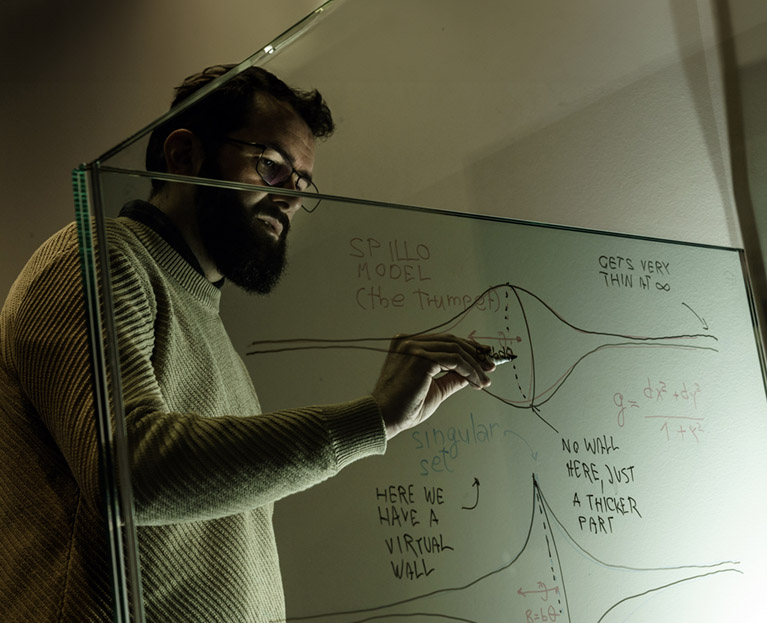
ThebreakthroughMarcello Seri
The trumpet conundrum
Never before had mathematical physicist Marcello Seri been so happy with a pub night. Over a beer in a Parisian pub he was introduced, finally, to the one theory that helped make sense of his research.
‘At the time, I was focusing on a problem in mathematical physics, a branch of mathematics in which problems are inspired by physical systems’, says Seri, an associate professor at the Bernoulli Institute. ‘I was trying to push a certain theory to its limit and develop our understanding of it.’
The problem Seri was working on was a purely theoretical one: he studied the quantum mechanics of two magnetic fields.
Bounce
‘Normally, if I throw a ball against a wall, it is supposed to bounce back’, Seri explains. ‘But if I throw a wave-like particle like an electron against that same wall, it should partially go through. In my mathematical problem, I saw the exact opposite. The electrons bounce back, while the ball passes through.’
Seri wanted to explain that phenomenon, but he got stuck in his calculations. His research included a trumpet-shaped graph that he had been pondering for years. That all changed in France.
‘I was working at University College London at the time, and with my research group I attended a conference in Paris’, Seri says. ‘There I met fellow mathematician Gianluca Panati. He knew what I was working on and had heard about other research including trumpet graphs at another conference.’
The mathematicians in question worked in Paris, so with a couple of e-mails a meeting was arranged. That same evening, Seri ended up in a Parisian pub where Panati introduced him to Ugo Boscain, professor at the Sorbonne University in Paris, and his PhD student at the time, Dario Prandi.
Parallel parking
Boscain and Prandi conducted research in sub-Riemannian geometry, a very different branch of mathematics from Seri’s research in mathematical physics. ‘It studies motions limited in speed’, Seri says. ‘Like with parallel parking: the movements you can make when parking are limited by the tires of your car. You cannot just move the car in any direction.’
The meeting was exactly what he needed. ‘Thanks to this, I saw new mathematical phenomena and their effects in my model.’ In the following days, Seri sat down at his desk working out the mathematics. He succeeded: he was able to use Boscain and Prandi’s version of the trumpet graph in his own research. ‘I was excited and immediately called my colleagues.’
Normally, in mathematics, your methods are very tied to the theories you are studying. ‘But this was completely different’, Seri says. ‘My method, brought into a theory from another corner of mathematics, fit into place surprisingly well. I was finally able to solve my riddle.’
Expert
A whole new world opened up for Seri. ‘I began to delve more and more into sub-Riemannian geometry.’ The ideas he discussed with his colleagues turned out to be applicable to a whole range of other mathematical problems.
Because this branch of mathematics was so young, Seri was at the forefront of mathematical research. Ten years later, he is even considered an expert on sub-Riemannian geometry: all thanks to a chance meeting at a Paris conference.
‘I became good friends with the people I met’, he says. ‘Especially with Dario Prandi, we work together a lot. We see each other often at conferences and visit each other regularly. I am incredibly grateful to have met them that night.’